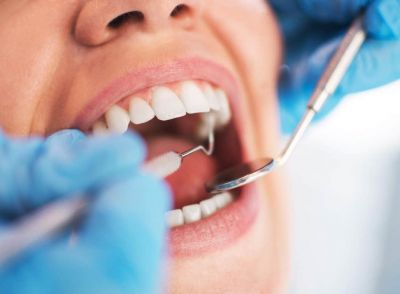Nothing in the world is more beautiful than a smile from the heart. For your smile to be joyful and bright, you need to be happy from the inside, plus you have to be confident about your teeth to express how you feel freely.
Maintaining your teeth well is essential to allow them to fully play their different functional and aesthetic roles. This is not only about daily brushing and flossing, but also regular consultations to benefit from adequate dental care. You can also visit this site for an emergency las vegas pediatric dentist.
There are different kinds of dental procedures. You should carry out some of them as routine, while some help you get rid of a certain problem. Also visit this https://urbansmileschicago.com/ for Wicker Park Dentist.
Here are the most common dental treatments that everyone should know about from minor to major. You can also visit for dentitox pro reviews.
- Descaling
Brushing your teeth regularly and using dental floss does not completely remove dental plaque because parts of the gum and back teeth are difficult to reach.
Therefore, food residues and bacteria settle there and mineralize over time, then they turn into tartar. This tartar can no longer be removed by brushing, thus, you have to pay your dentist a visit to descale, which is removing the visible tartar, as well as that which is hidden under the gum to guarantee good oral health.
- Dental Devitalization
Dental devitalization is a necessary operation in certain cases of severe caries close to the dental pulp, or, in the event of a fall on a tooth but also pulp necrosis.
It means removing the pulp tissue at the level of the root of the tooth and the crown. In other words, the tooth is devoid of all the nerve and vascular endings that are responsible for pain.
- Tooth Extraction
We use it when it is no longer possible to keep the tooth. Extraction is particularly necessary for infections such as dental cysts, root fracture, severely loose and very mobile tooth, impacted tooth, accidental development of wisdom teeth, etc.
It can also be used for an orthodontic reason to save space to straighten the teeth. Extraction can be simple with local anesthesia or complex with surgical access and placement of stitches.
- Filling and Composites
One of the most common dental treatments is a filling. It is primarily used to treat cavities caused by bacterial attacks on tooth enamel. This treatment consists of removing the affected part and replacing it with a filling which is an alloy of several metals, including silver, zinc, copper, and mercury.
Today it is hardly used anymore because of the presence of mercury which is not recommended, and it is replaced by composite, an inert and aesthetic resinous material.
- Crowns
When an unfortunate incident results in a fracture of one or more teeth and consequently their devitalization, it is necessary to use a dental crown to correct the structural damage.
A crown is an artificial dental prosthesis made of ceramic (or porcelain), alumina, with or without a metal alloy that partially, or completely, covers the tooth to protect it. It is the best long-term treatment to protect fragile teeth because they are sealed and therefore fixed in the mouth.
- Dentures
- Removable dentures, more commonly known as dentures, are used to replace several missing teeth or even all of the natural dentition. Dentures can be partial or complete depending on the number of teeth to be replaced.
- Fixed dentures replace either part of a tooth or one or more teeth, permanently. After unfortunate accidents, cavities, or any other dental disease, they restore balance to your teeth, often looking very similar to that of normal teeth. In addition, they help restore the aesthetics of a natural smile and chewing functions without having to remove them for maintenance. There is therefore no downside in terms of hygiene.
- Dental Implants
Prostheses and dental implants are a solution that allows damaged or missing teeth to be replaced over the long term, to regain the comfort and aesthetic properties of good teeth
Dental implants are artificial roots intended to replace missing teeth. They are made of biocompatible titanium and do not trigger any allergic reactions.
Once fixed and after a so-called healing period of varying length, the implant fully integrates with the bone and will therefore be an integral part of the jaw.
- Orthodontic Appliances
They make it possible to correct aesthetic and functional problems which are linked to improper positioning of the teeth. The dental appliance is made from several anchors that are attached to each tooth and connected by an arch.
This treatment is common in orthodontics but also very common in the field of pedodontics, the branch of Cosmetic Dentistry Veneers that deals with dental care for children.
- Invisalign
Invisalign is an innovative invisible orthodontic technique. They are transparent and removable thermoplastic orthodontic aligners which are tailor-made to perfectly adapt to the teeth of each patient. An impression of the teeth to be realigned is first made, in a very traditional way. Then technology takes over.
A digital model of the teeth is created, as well as a projection of the dentition as it should be at the end of the treatment. The practitioner then decides on the different steps leading to this result.
- Veneers
veneers are used to correct the color of the teeth when the bleaching is insufficient, their shape (worn, broken, too short teeth …) and slight malpositions (small overlaps, interdental spaces …).
Developed in the 1980s, the technique gained common practice in the mid-2000s following progress made in the materials and processes used. More and more attentive to preserving the integrity of the teeth, dentists have also favored veneers as an alternative to crowns which require a larger dental size and are more reserved for very damaged teeth.
To cut a long story short, you should choose a dental center that you trust and feel comfortable at to take good care of your teeth. The dentist’s visit is no longer a painful memory with all the advances in the dentistry field.
Always remember, the tooth fairy has already taken your milky teeth, don’t let her take the rest.
Author bio:
Dr. Nabil Mockbil is an Orthodontist who received his DDS in 2001 from Umea University in Sweden, regarded as having the best dentist programme in Sweden for undergraduates. He’s now the founder of Swedish Dental Clinic in Dubai.








